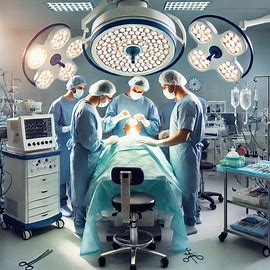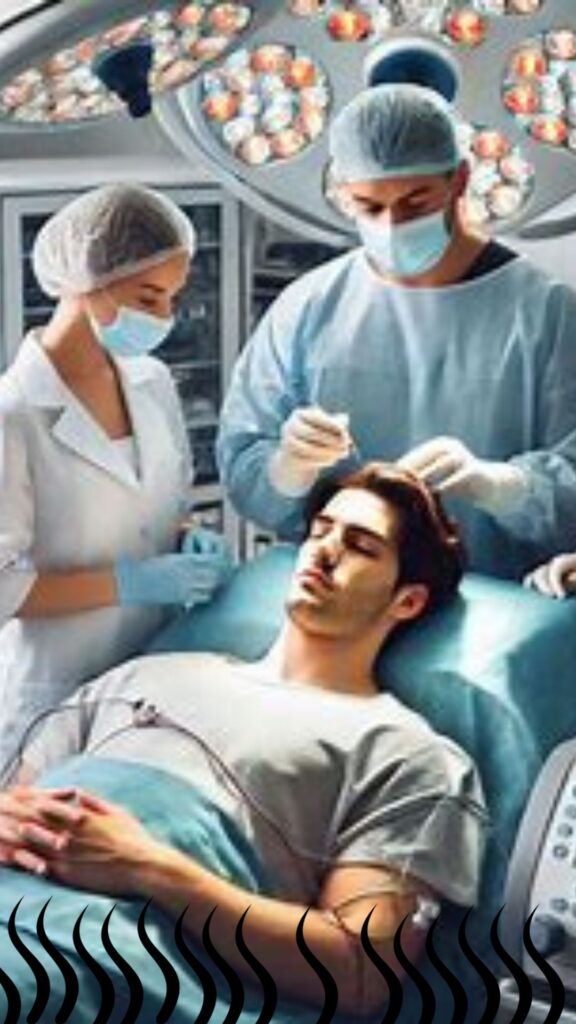Unlock the Secrets to Regaining Confidence and Achieving Natural, Lasting Hair Restoration
Introduction
Hair loss is a deeply personal journey that can impact not just your appearance but also your confidence and emotional well-being. It’s a challenge that millions face, with causes ranging from genetics and aging to stress, lifestyle factors, and medical conditions. Yet, thanks to remarkable advancements in medical science, hair restoration has become more effective and accessible than ever before.
This e-book, The Science of Hair Restoration: Everything You Need to Know, is your comprehensive guide to understanding the transformative world of hair restoration. Whether you are just starting to explore solutions or are ready to take the next step, this resource will equip you with the knowledge needed to make informed decisions.
In the pages ahead, you will discover the biology behind hair growth and the reasons hair loss occurs, delve into the evolution of hair restoration techniques, and learn about cutting-edge procedures like Follicular Unit Extraction (FUE), Follicular Unit Transplantation (FUT), and PRP (Platelet-Rich Plasma) therapy. You’ll also gain practical insights into post-procedure care and maintaining long-term results.
Moreover, we’ll address common myths and misconceptions that often deter people from seeking treatment, providing clarity and confidence in the process.
At AS Hair Clinic, we understand that hair restoration is more than a medical procedure; it’s a life-changing decision. This e-book reflects our commitment to empowering you with the science, strategies, and support to embark on this transformative journey.
So, whether you’re struggling with thinning hair, hereditary baldness, or simply looking for a way to reclaim your youthful look, this guide is for you. It’s time to explore the science of hair restoration and take the first step toward a confident, vibrant you.
Chapter 1: Understanding Hair Loss

Hair loss affects millions of people worldwide, yet it remains a complex and often misunderstood condition. By understanding the biology of hair growth and the factors contributing to hair loss, you can take the first step toward effective treatment.
The Biology of Hair Growth: Hair Cycles and What Affects Them
Hair growth occurs in a cycle of three distinct phases:
Hair Growth Over Time:
o While hair transplants offer immediate results, new hair may take a few months to grow fully. Typically, you’ll begin seeing visible changes within 3–6 months, with optimal results emerging after 12–18 months.
Conclusion Post-procedure care is just as important as the hair restoration treatment itself. By following the right aftercare instructions and maintaining a healthy lifestyle, you can ensure that your new hair continues to grow and thrive. Long-term commitment to proper hair care, combined with professional follow-ups, can help you achieve and maintain the best possible outcome for years to come.
Summary: This e-book, “The Science of Hair Restoration: Everything You Need to Know”, offers a thorough guide to understanding hair loss and the effective treatments available. It covers the biology of hair growth, common causes of hair loss, and how to identify different types of hair loss. The book explores the evolution of hair restoration techniques, focusing on advanced surgical methods like FUE and FUT, and non-surgical options such as PRP therapy. It provides detailed advice on post-procedure care for optimal recovery and long-term success, emphasizing the importance of healthy lifestyle choices and consistent maintenance. Finally, it dispels common myths surrounding hair restoration, offering clear, science-backed insights to help readers make informed decisions.
Anagen Phase (Growth Phase):
o This is the active growth phase, lasting 2–7 years. During this period, hair follicles produce new hair cells, pushing old ones upward to form visible strands.
o Approximately 85% of the hair on your scalp is in this phase at any given time.
Catagen Phase (Transition Phase):
o Lasting about 2–3 weeks, this is a short phase where hair growth ceases, and the hair follicle shrinks.
o The hair detaches from the blood supply, preparing to shed.
Telogen Phase (Resting Phase):
o Lasting around 3 months, this is when hair rests before falling out naturally, making room for new growth.
o About 10–15% of scalp hair is in this phase.
What affects hair cycles?
Genetics: Determines the duration of the anagen phase and the likelihood of pattern baldness.
Hormonal Changes: Dihydrotestosterone (DHT), a hormone derivative, can shorten hair cycles and shrink follicles in people prone to androgenic alopecia.
External Factors: Stress, poor nutrition, medical conditions, and certain medications can disrupt hair cycles.
Common Causes of Hair Loss
Genetic Factors (Androgenic Alopecia):
o Also known as male or female pattern baldness, this hereditary condition affects the hairline, crown, or overall thinning.
o It’s caused by sensitivity to DHT, which shrinks hair follicles over time.
Hormonal Imbalances:
o Conditions like pregnancy, menopause, thyroid disorders, or polycystic ovary syndrome (PCOS) can disrupt hormone levels and trigger hair loss.
Medical Conditions:
o Autoimmune diseases (e.g., alopecia areata), scalp infections, and certain chronic illnesses may lead to hair shedding or bald patches.
Lifestyle Factors:
o Stress, poor diet, lack of sleep, and harsh hair treatments can weaken hair follicles and contribute to thinning.
Medications and Treatments:
o Chemotherapy, radiation therapy, and drugs for conditions like hypertension and depression often list hair loss as a side effect.
Identifying the Type of Hair Loss You Are Experiencing
Recognizing the specific type of hair loss is crucial for effective treatment. Here’s how to differentiate:
Pattern Baldness (Androgenic Alopecia):
o Gradual thinning, often in predictable patterns.
o Common in men (receding hairline, thinning crown) and women (diffuse thinning, widened part).
Alopecia Areata:
o Sudden, round patches of hair loss caused by an autoimmune response.
Telogen Effluvium:
o Diffuse thinning due to stress, illness, or sudden hormonal shifts. Often temporary, resolving once the trigger is removed.
Traction Alopecia:
o Caused by excessive tension on the hair due to tight hairstyles, extensions, or braiding.
Scarring Alopecia:
o Permanent hair loss caused by scarring from conditions like lichen planopilaris or lupus.
Conclusion Understanding the underlying cause of hair loss is key to selecting the right treatment path. Consulting with a specialist and undergoing a proper diagnosis ensures you take steps that are scientifically sound and tailored to your needs.
Chapter 2: The Evolution of Hair Restoration Techniques

Hair restoration has come a long way from its experimental beginnings to the highly advanced procedures available today. This chapter explores the history of hair restoration, the role of modern technology, and the options available for both surgical and non-surgical methods.
A Brief History of Hair Restoration Procedures
Early Experiments in Hair Restoration:
o The earliest recorded attempts date back to the early 19th century, with crude methods such as hair grafting and scalp reduction.
o These procedures were often invasive, with limited success and significant risks.
The Birth of Modern Hair Transplants:
o In 1952, Dr. Norman Orentreich introduced the first scientifically validated hair transplant procedure.
o He demonstrated that hair from the back of the scalp, where follicles are more resistant to hair loss, could be transplanted to thinning areas.
o This “donor dominance” principle became the foundation of modern hair restoration.
Advancements in the 1990s and Beyond:
o The 1990s saw the emergence of Follicular Unit Transplantation (FUT), a method where hair follicles were transplanted in their natural groupings.
o Later, Follicular Unit Extraction (FUE) became a game-changer, offering a minimally invasive alternative to FUT with faster recovery times and less scarring.
How Modern Technology Has Revolutionized Hair Transplants
Precision Instruments and Robotics:
o Advanced surgical tools and robotic systems now allow for precise extraction and implantation of hair follicles.
o Robotic devices such as the ARTAS system use AI to identify the healthiest follicles for transplantation.
Natural-Looking Results:
o Modern techniques ensure hairlines are designed to complement individual facial features, creating seamless and natural results.
o Microscopic grafting allows for the transplantation of single or double hair follicles to mimic natural growth patterns.
Minimally Invasive Procedures:
o Innovations in anesthesia and surgical tools have significantly reduced downtime, pain, and scarring.
The Difference Between Surgical and Non-Surgical Hair Restoration Methods
Surgical Hair Restoration:
o FUT (Follicular Unit Transplantation):
Involves removing a thin strip of skin from the donor area and extracting hair follicles from it.
Suitable for covering larger areas of hair loss.
Results in a linear scar, though it’s often hidden within existing hair.
o FUE (Follicular Unit Extraction):
Individual hair follicles are extracted directly from the donor area using a punch tool.
Leaves tiny, dot-like scars that are virtually invisible.
Ideal for those seeking a less invasive procedure with faster recovery.
Non-Surgical Hair Restoration:
o PRP (Platelet-Rich Plasma) Therapy:
Uses the patient’s own blood to extract growth factors that stimulate hair growth.
Often combined with surgical methods for enhanced results.
o Medications:
FDA-approved treatments like minoxidil and finasteride help slow hair loss and encourage regrowth.
Effective for early-stage hair loss but require continuous use.
o Hair Systems and Prosthetics:
Non-surgical hairpieces or wigs tailored to match the individual’s natural hair.
A temporary solution that doesn’t require medical procedures.
Conclusion The evolution of hair restoration techniques has provided patients with a wide range of options, from minimally invasive surgeries to non-surgical treatments. These advancements ensure that hair restoration is not just effective but also tailored to individual needs, offering natural-looking results and restoring confidence.
Chapter 3: Hair Transplant Techniques Explained

Hair transplantation has become a reliable and effective solution for those experiencing significant hair loss. In this chapter, we delve into the two primary methods of surgical hair transplants—Follicular Unit Extraction (FUE) and Follicular Unit Transplantation (FUT)—highlighting how they work, their benefits, and considerations for choosing the right technique.
FUE (Follicular Unit Extraction): How It Works and Its Benefits
How FUE Works:
o Individual hair follicles are extracted one by one from the donor area (usually the back or sides of the scalp).
o Using a tiny punch tool, the surgeon removes the follicles with minimal disruption to the surrounding tissue.
o The extracted follicles are then implanted into the thinning or balding areas, following the natural direction and density of hair growth.
Benefits of FUE:
o Minimally Invasive: The procedure doesn’t require stitches, resulting in faster healing.
o No Linear Scar: Unlike FUT, FUE leaves tiny dot scars that are virtually invisible, even with short hairstyles.
o Quick Recovery: Patients often return to normal activities within a few days.
o Natural Results: Advanced tools and techniques ensure hairlines and density look seamless and natural.
Who Is FUE Best For?
o Ideal for individuals who prefer shorter hairstyles.
o Suitable for small to medium-sized transplant areas.
FUT (Follicular Unit Transplantation): What to Expect and When It’s Used
How FUT Works:
o A thin strip of scalp is surgically removed from the donor area.
o The strip is dissected under a microscope to extract individual hair follicle units.
o The follicular units are implanted into the recipient area in carefully planned patterns.
Benefits of FUT:
o Higher Graft Yield: Allows for the harvesting of more grafts in a single session, making it ideal for extensive hair loss.
o Cost-Effective: Generally less expensive than FUE for larger procedures.
o Durable Donor Area: Since the donor area is closed with stitches, the surrounding follicles are preserved.
Considerations for FUT:
o Leaves a linear scar, though it can often be concealed by longer hair.
o Longer recovery time compared to FUE.
Who Is FUT Best For?
o Suitable for patients with advanced hair loss requiring a high number of grafts.
o Best for individuals who typically wear their hair longer.
Comparisons: Which Technique Is Right for You?
Feature
FUE
FUT
Scarring
Tiny, dot-like scars (nearly invisible)
Linear scar (hidden in longer hair)
Recovery Time
Short (3–5 days)
Longer (7–10 days)
Graft Yield
Moderate (ideal for small areas)
High (ideal for large areas)
Cost
Typically higher per session
Generally more affordable
Ideal Candidate
Small to medium hair loss, short hairstyles
Extensive hair loss, longer hairstyles
Choosing the Right Technique
Your choice between FUE and FUT will depend on factors like the extent of your hair loss, your aesthetic goals, and lifestyle preferences. Consulting a hair restoration specialist is crucial to determine the most suitable option for achieving your desired results.
Conclusion Both FUE and FUT offer proven solutions for hair restoration, each with its unique advantages. By understanding these techniques, you can make an informed decision that aligns with your personal needs and expectations, paving the way for a successful and satisfying hair restoration journey.
Chapter 4: The Role of Platelet-Rich Plasma (PRP) Therapy

Platelet-Rich Plasma (PRP) therapy has emerged as an innovative, non-surgical solution for hair restoration. Leveraging the body’s natural healing processes, PRP enhances hair growth and complements surgical procedures like FUE and FUT. In this chapter, we explore the science behind PRP, its benefits, and what to expect from treatment sessions.
How PRP Complements Hair Restoration
The Basics of PRP Therapy:
o PRP involves extracting a small amount of the patient’s blood, which is then processed in a centrifuge to concentrate platelets and growth factors.
o The enriched plasma is injected into the scalp at targeted areas to stimulate hair follicles and promote growth.
Complementing Surgical Hair Restoration:
o When combined with hair transplant procedures, PRP accelerates healing and enhances graft survival.
o PRP boosts the health of existing hair follicles, encouraging thicker and healthier hair growth.
As a Standalone Treatment:
o PRP is effective for individuals in the early stages of hair thinning or with conditions like androgenic alopecia.
o It delays hair loss progression and revitalizes dormant follicles.
The Science of PRP: Stimulating Natural Hair Growth
Growth Factors in PRP:
o Platelets contain proteins and growth factors like platelet-derived growth factor (PDGF), vascular endothelial growth factor (VEGF), and epidermal growth factor (EGF).
o These factors repair damaged tissues, enhance blood supply to hair follicles, and activate stem cells, promoting robust hair growth.
Increased Follicular Density:
o PRP improves the vascularization around hair follicles, increasing nutrient delivery and supporting follicular regeneration.
Safe and Natural:
o Since PRP uses the patient’s own blood, the risk of allergic reactions or adverse effects is minimal.
What to Expect from PRP Sessions
Procedure Overview:
o Step 1: A small amount of blood is drawn from the patient’s arm.
o Step 2: The blood is processed in a centrifuge to isolate the PRP.
o Step 3: The PRP is injected into the scalp using fine needles, targeting areas of thinning or hair loss.
Treatment Timeline:
o PRP therapy typically requires multiple sessions (3–6) spaced 4–6 weeks apart.
o Maintenance sessions may be recommended every 6–12 months.
Minimal Downtime:
o The procedure is quick, lasting about 30–60 minutes.
o Patients may experience mild redness or tenderness, which subsides within a day or two.
Expected Results:
o Visible improvement often begins within 3–6 months, including reduced shedding, increased hair density, and thicker strands.
Benefits of PRP Therapy
Non-Surgical and Minimally Invasive:
o No incisions, stitches, or significant recovery time required.
Effective for Various Hair Loss Types:
o Works well for androgenic alopecia, stress-induced hair loss, and thinning hair.
Enhances Transplant Outcomes:
o Promotes faster healing and improves the success rate of transplanted hair follicles.
Improves Scalp Health:
o Reduces inflammation and creates an optimal environment for hair growth.
Conclusion PRP therapy represents a cutting-edge approach to hair restoration, offering a safe, natural, and effective way to rejuvenate hair growth. Whether used as a standalone treatment or in combination with hair transplants, PRP can help individuals achieve healthier, fuller hair while preserving existing strands.
Chapter 5: Post-Procedure Care and Long-Term Success
Achieving the best possible results from your hair restoration treatment doesn’t stop once the procedure is over. Post-procedure care and consistent long-term maintenance are essential components of the success of your hair transplant or PRP therapy. This chapter provides a detailed guide on what to expect after your procedure, tips for a smooth recovery, and how to ensure lasting results.
Tips for a Smooth Recovery After a Hair Transplant

Follow Your Surgeon’s Instructions:
o Your hair restoration specialist will provide a personalized post-operative care plan. Following these instructions is crucial for minimizing complications and maximizing results.
Avoid Touching or Scratching the Scalp:
o After a hair transplant, your scalp may be tender, and some scabbing may occur around the transplanted follicles.
o Avoid scratching or rubbing the scalp, as this can dislodge grafts and increase the risk of infection.
Sleeping Position:
o For the first few days following the procedure, sleep with your head elevated to reduce swelling and minimize pressure on the scalp.
o Using a neck pillow can help maintain this position comfortably.
Pain Management:
o Most patients experience mild discomfort after surgery, which can be managed with over-the-counter pain medication or as prescribed by your surgeon.
o Swelling around the forehead and eyes is common but typically subsides after a few days.
Avoid Physical Activity:
o Avoid strenuous exercise or heavy lifting for at least 2 weeks after the procedure to prevent increased blood flow to the scalp and reduce the risk of swelling or bleeding.
Maintaining Healthy Hair Growth Through Lifestyle and Care Routines
Gentle Hair Care:
o After the first few weeks, use mild, sulfate-free shampoos and conditioners to wash your hair.
o Avoid vigorous towel drying or excessive heat styling.
Scalp Massage:
o Gently massaging the scalp can improve circulation and keep hair follicles healthy.
o Avoid any vigorous massaging on the newly transplanted area until fully healed.
Nutrition and Supplements:
o Eating a balanced diet rich in vitamins and minerals, especially those essential for hair health (such as biotin, vitamin D, and iron), can support the regeneration of hair follicles.
o Consider supplements designed to enhance hair health, as recommended by your doctor.
Regular Check-Ups:
o Schedule regular follow-up appointments with your hair restoration specialist to monitor progress, address any concerns, and assess the success of your treatment.
Avoiding Stress:
o Chronic stress can contribute to hair thinning and loss. Incorporate stress-reducing practices such as yoga, meditation, or regular exercise to support long-term hair health.
Recognizing the Long-Term Benefits of Hair Restoration
Natural, Permanent Results:
o Both FUE and FUT techniques result in permanent hair growth, as the transplanted follicles are resistant to the hormones that cause hair loss.
o The results of PRP therapy can also be long-lasting with regular maintenance.
Improved Confidence:
o The restoration of a fuller hairline or thicker hair can significantly enhance your self-esteem and confidence.
o Many patients report feeling more youthful and empowered after hair restoration procedures.
Ongoing Hair Care for Lasting Results:
o Maintaining the health of your new hair requires ongoing care. Continue to follow good hair care practices and any maintenance treatments recommended by your doctor.
